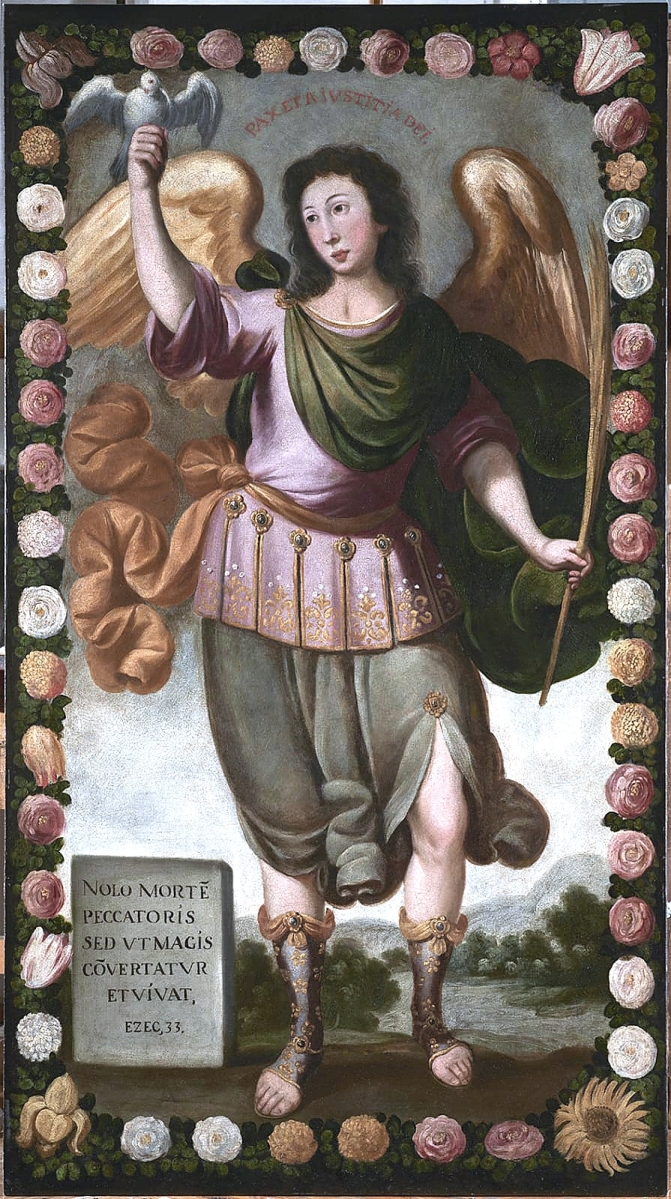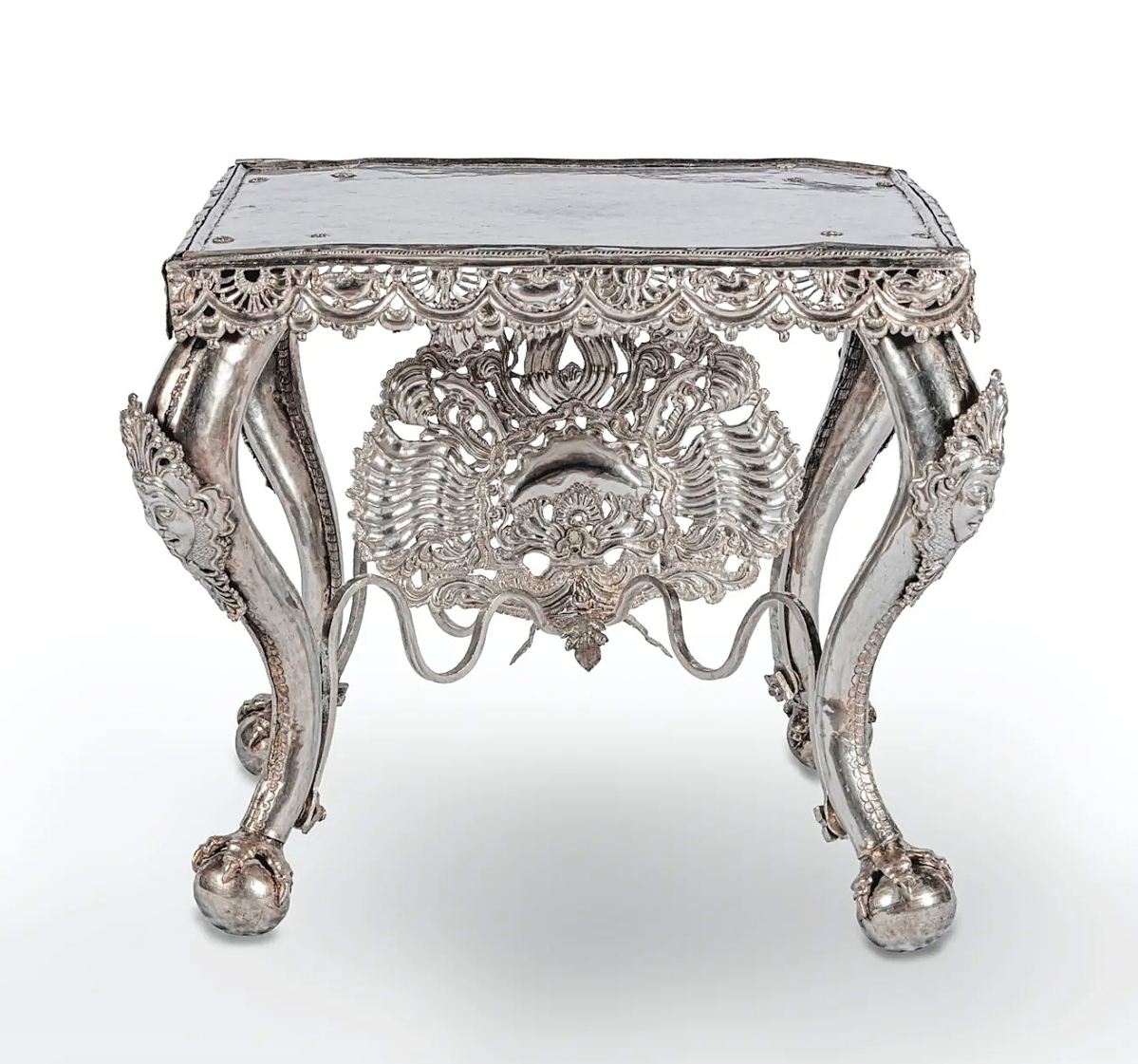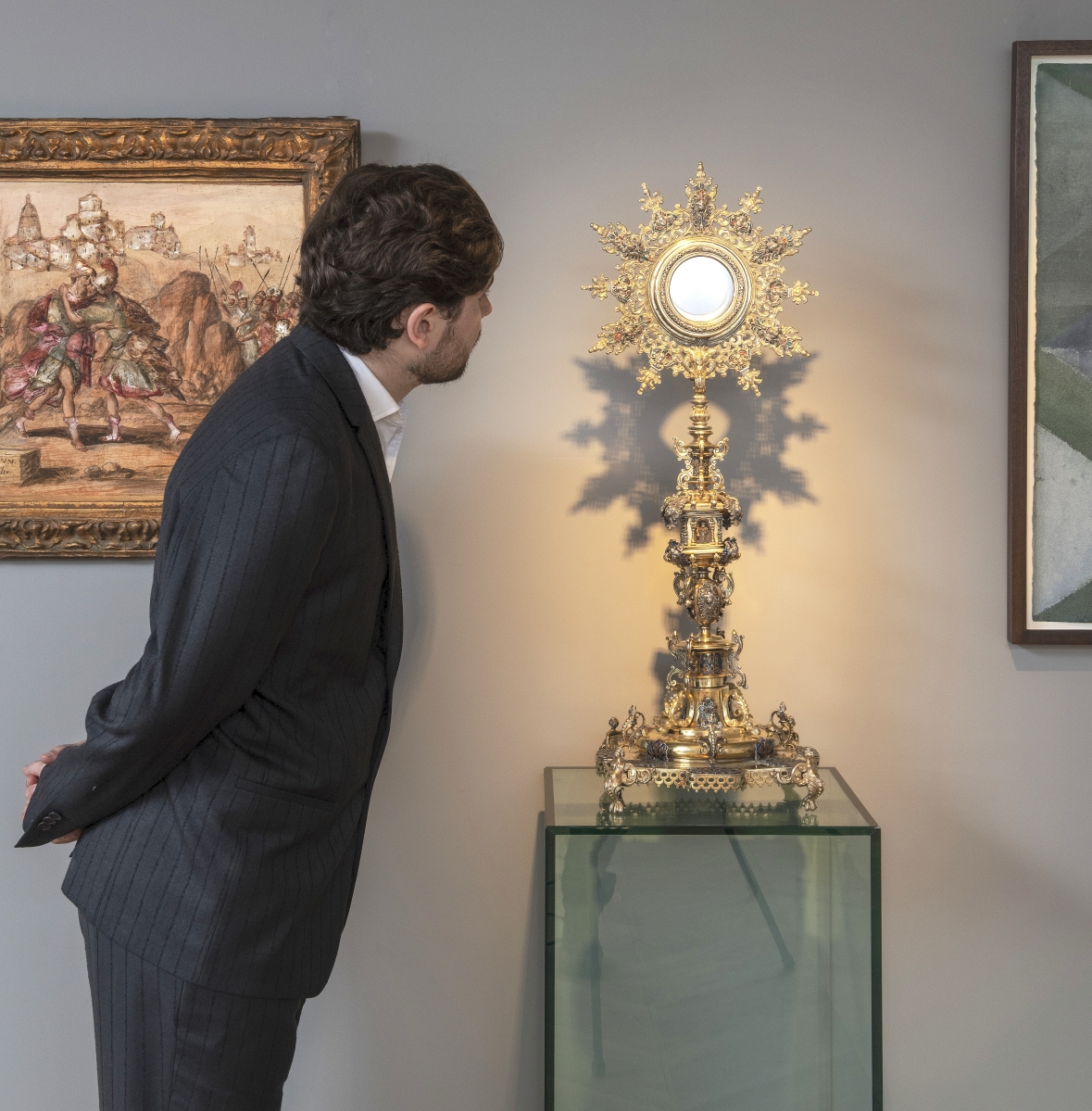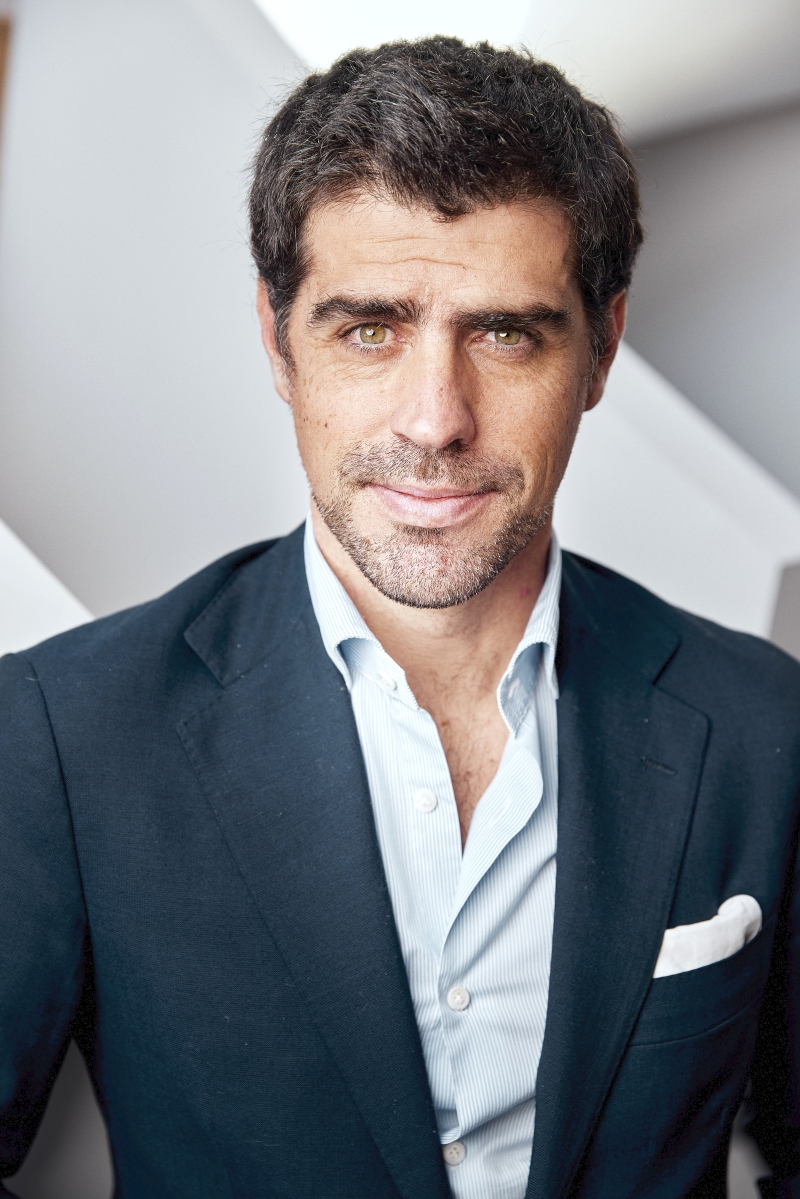On through September 10 in London and New York is Colnaghi’s latest exhibition, “Discovering Viceregal Latin American Treasures.” The exhibition documents the Sixteenth to Nineteenth Century art of the New World of Latin and South America, a style rooted in the European Catholic tradition that flourished in unexpected ways.
We sat down with Colnaghi’s joint chief executive Jorge Coll to learn about the influences across all mediums in this exhibition, which encompasses furniture, silver, painting and a number of novel techniques that came to light during this period.
When did you start working with Jaime Eguiguren on the exhibition?
We are close friends, the art world is a small place. I like to work with many of our colleagues, Colnaghi is a platform and you can collaborate in many directions. During TEFAF 2020, when we were about to close down the fair, we conceived of this idea to work on a project that we usually don’t have the time to develop. So we used the pandemic to develop the exhibition and it has been a titanic effort. It’s the only year where we could go so far and devote this amount of time to the catalog.
Have you had many exhibitions that span an array of mediums like this?
I’ve done 20 exhibitions in my career with printed catalogs. Sometimes you’re doing something that has a crossover theme, but it’s not a usual thing. This has been an opportunity. In 2011 we did an exhibition on Latin American art and we did a similar journey on the different fields there.
Can you give me a historical overview of the viceroyalties of this period?
This is an important question in the sense that we live in a very special moment, socially, all the different cultures, especially in America, want to be properly represented. The understanding of how cultures are born is important. The viceroyalty focuses on how the Spanish culture took over the previous culture, and we’ve tried to make a strong point that Latin American culture is a blend. You can see the Hispanic culture was a big influence, but later, as centuries pass, you can see the identity of Latin American culture as a mixture of pre-Hispanic and Hispanic culture.

“Saint Gabriel the Archangel” by an unidentified artist of Seventeenth Century Peru. Oil on canvas, 78-1/3 inches high. It was formerly in the collection of the bullfighter Antonio Fuentes and Zurita (1869-1938).
Whenever art crosses a cultural boundary, in this case from Spain to Latin America, there is always some kind of stylistic fusion. Where do we see this in the exhibition?
We see it in compositions, in the technique, in the style. In the enconchados, you’re looking at the Japanese Namban technique, though the compositions are mainly European, influenced from Flemish prints or even Spanish paintings – but the execution is local. There’s a fusion between these different worlds. You can see this in two paintings of archangels, “Saint Gabriel the Archangel” and “The Angel Zadkiel.” They are Peruvian, Seventeenth Century, their subjects inspired by Spanish traditions, but at the same time the border flower decoration would never have happened in Spain – it comes from Latin American culture. Then you have something like the enplumado (a feather work mosaic), a portrait of Alexander VII painted after a print by Pietro Paolo Vegli. That is completely a South American technique.
The exhibition spans 1520 to 1820. How do you illustrate the beginning and end?
When the Spanish arrived, they’re looking into local cultures, which are important. They reached the Mayan and the Incas, a very different kind of thing, and we have examples from those cultures in the exhibition. Then you have a moment in the Sixteenth Century, not the colonization, but the evangelization. You have all the Jesuits and the Sixteenth and Seventeenth Century artists arriving – they create the first school. You can imagine there’s no common language between Europeans and natives, so they used art to communicate. At a certain point, you can see the native artists influenced by Europeans and somehow trained in the European culture but raised in their own roots. They start evolving their own art with their own style, Barroco Mestizo, it’s a mixture. In the Eighteenth Century, you have the secularization of the arts, illustrations, the local artists are getting more freedom to express themselves, you don’t have that kind of religious structure, which was very demanding.
Where do we see the influence of Old World artists on New World artists?
You have the Real Academia de Nobles y Bellas Artes de San Luis, in Mexico, kind of a Royal Academy. That was created in 1781, so much later. Previous to that the art would come through religion. There were artists like Bernardo Bitti and Matteo Pérez de Alesio, they were religious artists.
Were workshops and schools founded in the New World materially different from those in Spain?
Not really. They say the most serious school would be the Academia de San Carlos, which taught art in the European tradition of techniques and the history of art, etc.
How did the Asian influence come into play?
We’re talking about trading routes, this kind of relationship goes through trading. There’s an Eighteenth Century screen in the exhibition, “Biombo with Views of Mexico City.” It was produced to be exported to Spain or Asia. They would go one way or the other, the same with the silverware and the earthenware from Tonalá. When the Spanish arrived to America, their intention was actually to discover a route to Asia. What they found was a pitstop to get to Asia, arriving to America was the first stop and then they kept going. They created a commerce route between the three continents.

A silver estrado table from Upper Peru, Eighteenth Century. Cast, hammered, beaten and chased, 15 inches high.
Tell me about the Gonzaléz brothers, why is their work unique?
You have a kind of successful artist or workshop and from there you create a school. The works had roots in the New Spanish Baroque, combing oil and tempera painting with mother-of-pearl inlay. We don’t know for sure they were brothers, but they were certainly relatives. We think, by this time in Mexico, there were already Japanese artists bringing the enconchado techniques into play, introducing inlay. They were really skillful and their work produced real demand. The workshop was in operation for 100 years in the Seventeenth to Eighteenth Centuries. They were looking to prints and techniques from artists arriving from other parts of the world.
What characterizes the furniture from this period?
What you don’t see in the European work is the originality of the compositions. The woods are different, the New World is very rich in hardwoods, like mahogany and jacarandas. So they have different kinds of species. The furniture produced in the New World is quite focused on the New World. The influence goes one way. When they arrived to the New World and evolved, there’s always a lagging time period of 20 or 30 years. It wouldn’t make sense to come back to Europe, it would be old fashioned.
How did the use of precious metals evolve in art during this period?
If you look to the Pre-Columbian art, there’s a lot of gold, so obviously the fact that you already have all the material there naturally makes it a part of the style. If you look at Baroque sculpture in Europe, they have polychrome, and they use inlay in gold, but not really gold as jewels or in large volume. But if you look to the Baroque sculpture in Quito in Ecuador, all the decoration is done with jewelry and gold. The local artists were very used to using that gold and silver, which was more available and was used in the expression of art. You have a lot of important silverwork in Peru and Bolivia, the Andean countries, because they have all the mines.
Did the mining give rise to a new generation of smiths?
I think everything related to craftsmanship, it’s a very high level of expression. They were very skillful craftsmen. They were already working in that direction, but the silverwork and jewelry made there was certainly influenced by the European lifestyle. There were not salt and pepper silver works in the Mayan or Incan communities. Once they understood the kind of objects they were to reproduce for European society, they did, but with the same high level of craftsmanship. We have an estrado table in the last chapter, and you have all these faces of Indians decorating the legs; I like it very much, you have a lot of high-quality execution, but at the same time you have a very exotic influence on the objects. You can see unicorns, mythological figures, Indians – that would never happen in Europe. To see these European forms with decorative motifs, I find that very exotic.
Was art and the creation of symbolism a key component to colonization for Spain?
Religion was central to the art and colonization. The art and religion came as a combination to connect to different cultures. Since very early times, religion has used art to express and evangelize. In this case, when the language was a barrier, art was the tool to break that barrier.

A partially silver-gilt, casted, turned, chiseled, fretted and enameled portable monstrance is seen here. It is attributed to Luis Lezama of Cuzco, Peru, from the final quarter of the Seventeenth Century.
Tell me about the Lake Titicaca Workshop.
It’s picking up on craftsmanship again. You have to imagine it’s a center of South Andean art, it’s where the different Incan cultures would mix with religion. You can see how they start with this clear religious composition to evangelize, but then flourish with heavy decorations like the brocateados. European painting is a lighter way of seeing things. The Titicaca workshop is a richer decoration, Seventeenth Century works produced by natives but with the highest quality craftsmanship. I wouldn’t see them as paintings, but something like a silver work. If you compare the painters in Seventeenth Century Europe with those in the New World, there’s a gap. But in the craftsmanship, there’s no gap. You can see the quality in the compositions, it’s more Baroque, it’s more heavily compounded, decorations of gold, always one or two symbols that you wouldn’t find in European representations.
How were New World artists viewed in Spain? Did any of them travel to Europe?
There were people traveling to the New World for 10 to 20 years and coming back, then the viceregal courts going back to Spain and returning back. We have a roll up painting from Arequipa in Peru, and it’s of the Cardinal Moscoso. A very important figure in Arequipa, he becomes famous and goes to the court in Spain. There was a lot of demand in Spain for objects from the New World. In both the silverware and things like Tonalá ceramics, they were very sought-after in Spain. If you see the salt-cellar found in a shipwreck of the Nuestra Señora de Atocha, you can see there were many luxury objects that would be sent to Spain. There was a big trade and a big demand and that’s why, in a way, we have been able to find good things in our country.
Your favorite work in the exhibition?
I would say the screen is very impressive. It’s also a very rare example and amazing to be outside of Mexico. I very much like the estrado table, which is very unique, the only surviving example.
-Greg Smith





